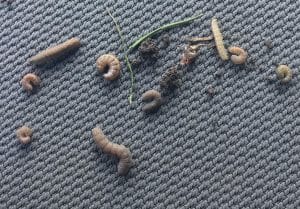Patches of missing plants will prompt farmers and agronomists to start scouting for cutworms. This scouting step is important because other factors, including dry seedbed conditions and others, can also cause patchy growth. You need to identify the cause so you make accurate action decisions.
You’ll find something if you look hard enough, which is why scouting has to go hand in hand with economic spray thresholds. With thorough scouting, you’re virtually certain to find cutworms, flea beetles, and lots of other insect pests. It may be tempting to spray when you find the pests, but it often takes quite a few to cause economic damage. That’s where the thresholds come in: the mere presence of field pests does not warrant chemical control, and sub-threshold insecticide applications do far more long-term damage to natural enemies and beneficial insects than pest species.
Other cutworm questions – When to scout? How to scout? What to spray? When to spray? – are answered in this article.
Cutworm survey. To help enhance our understanding of cutworms, please participate in an Alberta monitoring study. As AAFC research scientist Jennifer Otani says, cutworm outbreaks remain fairly unpredictable but we really need better information on densities, affected crops, and cutworm species. It’s going to take multiple years to do so, given the fact that we seem to have issues every 3 or so years, or it’s a different species in consecutive years. See the live Alberta 2019 cutworm map.


